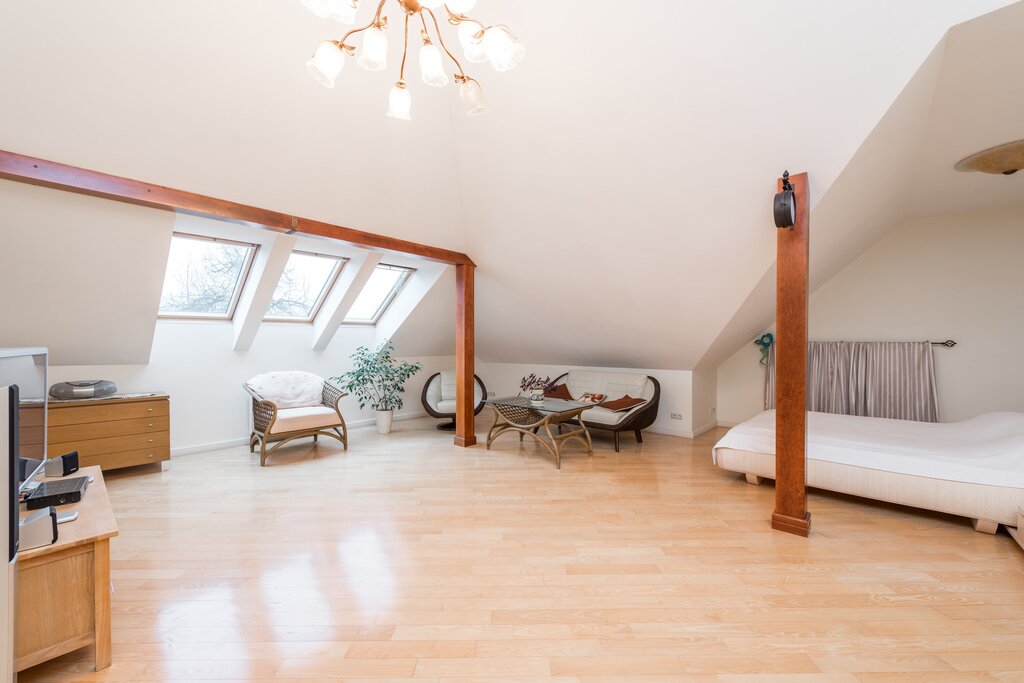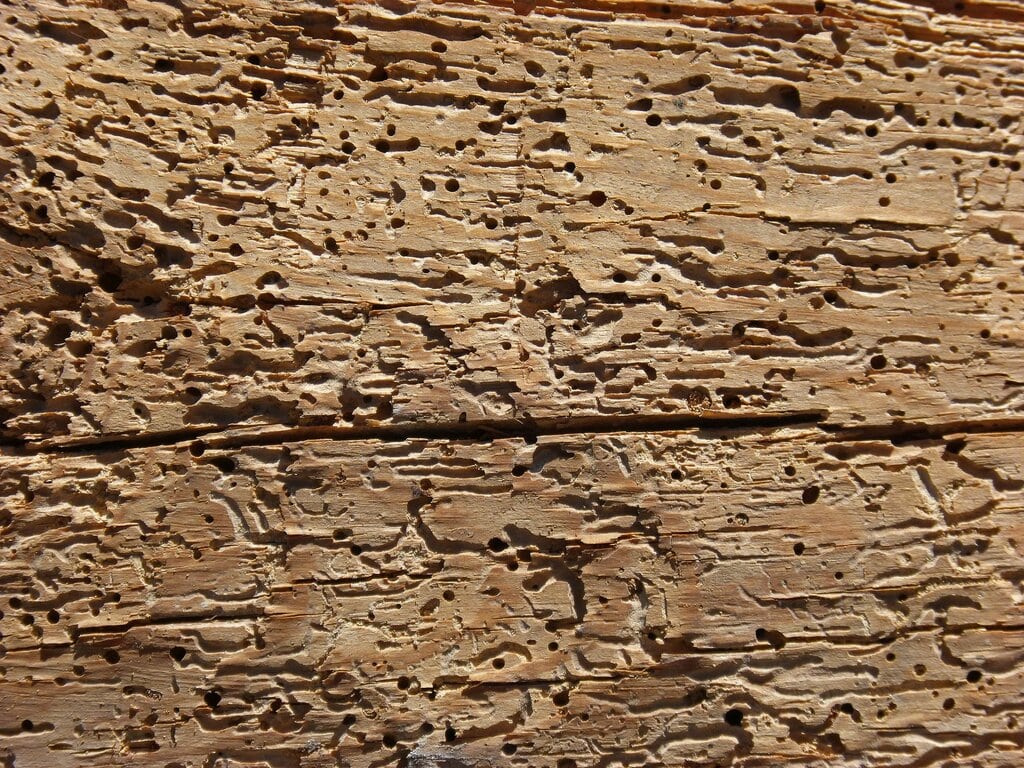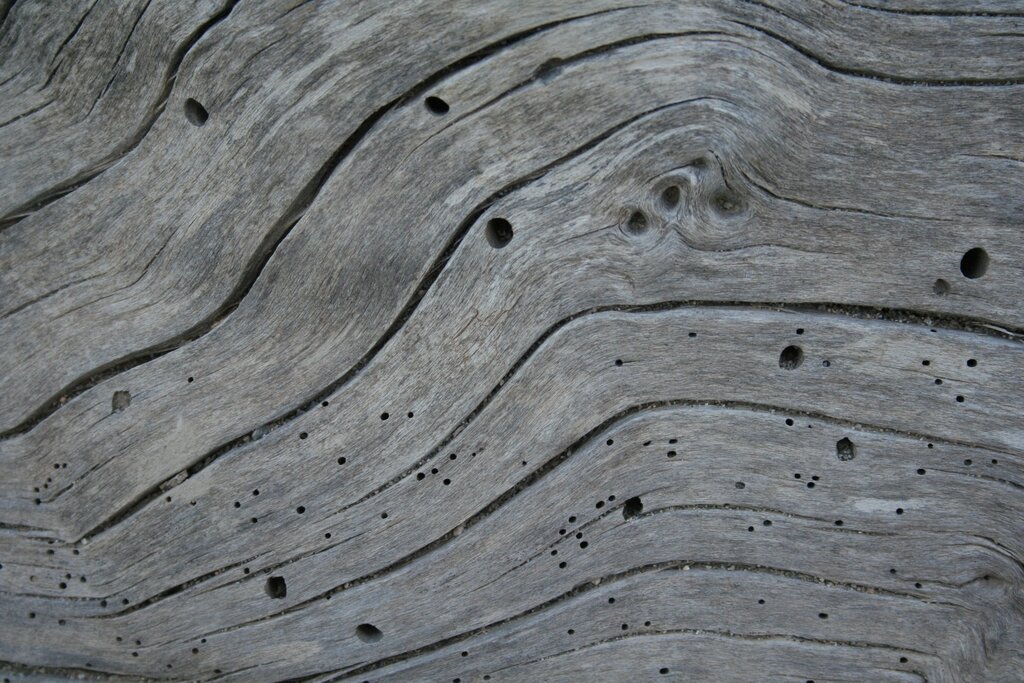
Do you have some unwanted “house guests”? Do they reside in your beloved wood floors and furniture? Check out our comprehensive wood flooring and bugs guide.
In the UK and especially in South-East England and London, timber can be susceptible to infestation by several wood bugs.
Woodworm is a general term. There are, in fact, several types of wood bugs, and they are pretty different in size, aspect and “manners”, so to speak.
High-moisture content in the timber is usually what attracts woodworms. Furthermore, they like the summer months when adult female beetles typically lay their eggs.
So, whether your timber flooring is old or new, you need to watch for wood bugs.
This article will go over the most common wood bugs in England and how to fight against them. They are pesky little beings that can do damage to your flooring, furniture, even the structural beams of your house.
So, how do you deal with wood flooring and bugs quickly and effectively to stop costly long-term damage to your floors?
Wood Flooring and Bugs: Identification
As we were saying, several insects can attack and damage the wood. So, you must identify them quickly and effectively. This way, you can also apply the right “medicine”.
When it comes to timber flooring, there are five usual “suspects”.
Powder post beetle
Powder post beetle is common in Britain. It attacks new timber and hardwoods, such as those used for flooring. So, Oak, Ash, Elm, Walnut, Sycamore, Sweet Chestnut and African Mahogany are usually infested with powder post beetle.
The larvae gradually eat into the infested timber, leaving a thin veneer of wood on the surface. The emerging adult wood bugs leave behind some fine bore dust and holes just 1 mm to 2mm in size.
If left unchecked for a long time, they will reduce the wood to a fine powder. This is why it’s called “powder post.”
The Common Furniture Beetle
This is probably the most common woodworm in the UK. You can identify it by the round holes it produces in timber. Moreover, it leaves some egg-shaped pellets of bore dust in its trail.
After hatching, the larvae wood bugs bore into the wood in search of nutrition. They love humidity and thrive where there is more than 12% moisture.
Consequently, the common furniture beetle is especially prevalent where timber rot has already occurred.
A severe infestation can cause severe damage and will require the replacement of timber.
Wood Flooring and Bugs: The Death-watch beetle
This wood bug is mainly found in historic buildings in southern and central England.
As a matter of fact, the death-watch beetle attacks decayed wood. Hardwood such as seasoned oak, ash or sweet chestnuts are the most prone to death-watch beetle infestation.
You can identify this type of wood buy by the large holes it leaves in the timber. They are around 3mm in diameter.
The larvae can live in a larvae state for up to 10 years. So, yes, it can cause severe structural damage if left unchecked.
The House Longhorn Beetle
This wood bug is not native to the UK. Nevertheless, it has become a pest mainly in Surrey and the London area. Around Surrey, it is also nicknamed “the Camberley beetle”.
The House Longhorn beetle thrives in softwoods, such as pine, spruce and fir timbers, especially around chimney areas.
The infestation is more likely to spread during the summer when the beetles fly freely from one building to the next.
The Wood-boring Weevil
This type of wood bug attacks damp timbers, especially if they are already in decay.
The wood-boring weevil can be identified by the oval-shaped holes it leaves in the wood.
They thrive in moisture. So, the infestation should naturally cease as soon as moisture is removed from wood and the decay is dealt with.
The Life Cycle of Wood Flooring and Bugs
Wood bugs have a pretty well-defined life cycle. Their lives comprise of three stages:
- Egg (adult female beetles lay the eggs in the timber)
- Larvae (as “babies”, the wood bugs feed on timber; this is when they do the most damage)
- Inset (they emerge from the wood and start laying other eggs)
So, it is not the insect in itself that causes the damage. It is the larvae. They need the timber to feed and grow.
Do you have some unwanted “house guests”? Do they reside in your beloved wood floors and furniture? Check out our comprehensive wood flooring and bugs guide.

However, some larvae can exist in the larvae stage for up to 10 years, and these are the most dangerous wood bugs.
Some of the big holes you see in the timber following the infestation are the flight holes caused by the winged insect as it emerges.
How to Tell if the Wood Bug Infestation is Still Active?
All wood-boring insects leave marks of their “visit”. Nevertheless, those tiny holes that we see in the wood are permanent. So, what can tell you if the infestation is still active?
Well, here are some things to look out for:
- Fine powdery bore dust around the holes
- Fresh round or oval exit holes
- Clean and fresh hole walls are seen under a magnifying glass and in good light; this will prove that the beetles have just emerged.
- Actual beetles spotted near the infested timber
In some severe cases of wood flooring and bugs, the chair legs can go through the timber floor. This indicates a grave problem that needs to be dealt with immediately.

Treatment for Wood Flooring and Bugs
Woodworm treatment shouldn’t only target the winged insect. Instead, it should also point at the larvae and eggs. These thrive in timber as long as they have the proper warmth and moisture conditions.
So, the most effective and long-term woodworm solution is to make sure the larvae don’t thrive inside the timber. This is known as environmental control.
So, reduce the moisture content of the timber and the adjacent areas through proper ventilation. Moreover, you should check for all the probable moisture sources, such as leaky roofs or pipes.
If you have rotting wood, you should remove it immediately. It is by far the most susceptible to insect attack.
If environmental control does not work, then you need to resort to chemical treatments. They will eradicate the infestations immediately and stop the insects from causing even more damage.
Nevertheless, before you go ahead and buy these chemicals yourself, we recommend you reach out to professionals. They will help you with expert advice and a proper evaluation of the infestation.
This is about everything you need to know about wood flooring and bugs. After you get rid of the pesky little wood bugs, make sure you ventilate your rooms properly. This way, you will predict any further infestations.
| Mon-Fri | 8:00AM – 5:00PM |
| Saturday | 10:00AM – 4:00PM |
| Sunday | 11:00AM – 3:00PM |





.svg)
.svg)